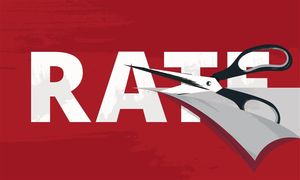
Short selling is the practice of borrowing securities and immediately selling them in the market, expecting to repurchase them later at a lower price to profit from the price difference. Traditional short selling requires the seller to borrow the securities before selling them, ensuring they can fulfill their delivery obligation at the time of settlement. Naked short selling is a more aggressive form of short selling.
It involves selling borrowed securities without first arranging to borrow them, meaning the seller must deliver the shares to the buyer without possessing them. Naked short selling is the practice of selling borrowed securities without first arranging to borrow them, creating a risk of being unable to fulfill the delivery obligation at the time of settlement.
Sounds complicated? Let’s start with the basics of how naked short selling works.
Naked short selling is a fraudulent practice where shares are sold without first being borrowed, resulting in a "failure to deliver" situation. This can artificially depress stock prices and harm investors. Naked short selling is illegal due to its potential for price manipulation and negative consequences.
In traditional short selling, a trader borrows shares of a company, expecting the price to decrease. They sell the borrowed shares in the market and wait for the price to decline. At settlement, the trader buys back the shares at a lower price and returns them to the lender. However, the process of naked short selling is significantly different.
Naked Short Selling: How It Works
Naked short selling is prohibited in most developed markets. It is illegal because it creates an opportunity for market manipulation. In terms of execution and regulatory compliance, naked short selling significantly differs from covered short selling. Covered short selling requires traders to purchase or borrow shares before selling them to ensure timely delivery, while naked short selling involves selling shares without prior arrangements.
This practice begins when a trader sells shares they do not own or have not borrowed. The trade is executed through a broker, who receives the sale proceeds but cannot deliver the shares when the standard two-day settlement period arrives. This results in a failure to deliver, or FTD. To cover the short position, the seller must purchase shares in the market. This can lead to price volatility as the seller must buy shares at a potentially higher price due to the scarcity created by the initial naked short sale.
Brokers play a vital role in both covered and naked short selling. In a covered short sale, the broker facilitates the borrowing of shares from another investor, ensuring the seller has the necessary shares for delivery. In a naked short sale, however, brokers may not be aware that the seller does not have the shares available. This lack of information creates a significant risk for the broker and the clearinghouse responsible for settling trades, potentially creating market imbalances and harming investors.
Unlike covered short selling, which adheres to strict regulatory requirements, naked short selling disregards those regulations. This could lead to market manipulation and negatively impact the value of companies and their investors.
Is Naked Short Selling Illegal?
To reiterate, naked short selling is illegal in most developed markets worldwide, including the United States. Regulatory bodies have implemented rules and regulations to curb this practice. The Securities and Exchange Commission (SEC) is essential in regulating securities markets and preventing naked short selling in the United States.
The SEC's Regulation SHO, implemented in 2005, targets naked short selling by requiring broker-dealers to have reasonable grounds to believe that shares can be borrowed before accepting a short sale order. This regulation aims to ensure that shares are available for delivery to buyers when due, reducing the likelihood of naked short selling and mitigating potential market imbalances. The SEC also maintains a "threshold security list" to monitor stocks with a high number of "fails to deliver," which can indicate potential naked short selling activity.
Despite the SEC's efforts, concerns remain regarding the prevalence and effectiveness of enforcement against naked short selling. Some argue that the practice continues to occur, potentially undermining market integrity and harming investors. This ongoing debate underscores the critical need for continued vigilance and rigorous enforcement of regulations to protect the integrity of financial markets and ensure a fair and transparent trading environment for all participants.
What's an Example of Naked Short Selling?
Imagine a trader has become aware of a recent negative report for Company X. The trader believes the stock price of Company X will decline. Instead of following the traditional short-selling practice of borrowing shares before selling them, the trader takes a riskier, illegal approach: they sell 1,000 shares of Company X without first arranging to borrow them. This is an example of naked short selling.
The trader bets on the stock price dropping, allowing them to repurchase the shares at a lower price later to cover their short position and make a profit. However, when the settlement date arrives, the trader doesn't have the shares to deliver, resulting in a failure to deliver (FTD).
To cover their short position, the trader must purchase the shares in the market. If the price has dropped as anticipated, they might make a profit. However, they will experience a significant loss if the price has risen. Their actions also contribute to market volatility, as the lack of available shares in the market could drive up the stock price, making it harder for other investors to buy the stock and potentially harming them.
The trader in this scenario is engaging in an illegal practice that could lead to significant legal and financial repercussions. Naked short selling is considered market manipulation and fraud in most jurisdictions. The trader faces potential fines, penalties, and criminal charges from regulatory bodies like the Securities and Exchange Commission (SEC). Furthermore, the broker facilitating the transaction could face scrutiny and fines for their role in the illegal activity.
Additionally, the trader's actions could have serious financial consequences, as they risk substantial losses if the stock price rises rather than falls. The potential for loss is amplified by the lack of shares available to cover the short position, potentially driving up the stock price and leading to more significant losses. Naked short selling is a risky and illegal practice with substantial legal and financial consequences.
How Does Naked Short Selling Impact the Market?
The market impact of naked short selling remains contentious, with opposing viewpoints emerging from economists, traders, and regulatory bodies. Some argue that it can positively contribute to market liquidity and price discovery, while others assert that it leads to market manipulation and potential financial instability.
Proponents of naked short selling argue it can enhance liquidity, particularly in illiquid markets where borrowing shares is difficult or expensive. They suggest that naked short sellers might be willing to sell shares even when borrowing is challenging, increasing the overall supply and making it easier for investors to buy and sell. Additionally, they argue that naked short selling can contribute to price discovery by reflecting the actual market value of a security, incorporating information about supply and demand.
However, critics contend that naked short selling is detrimental to market stability and integrity. They argue that the practice can artificially depress stock prices, potentially harming investors and companies. The lack of transparency surrounding naked short selling makes it easier for manipulators to conceal their activities and influence prices, undermining investor confidence and creating uncertainty and volatility in the market. Critics also emphasize that the practice can be used to manipulate prices for personal gain, particularly in smaller companies with limited liquidity.
The ongoing debate surrounding naked short selling highlights the complex nature of its impact on financial markets. While some believe it can contribute to market efficiency and price discovery, others argue that its potential for manipulation and market instability outweighs any potential benefits. Regulatory bodies continue to monitor and address this practice to mitigate risks and ensure fair market practices.
How Do Regulators Prevent Naked Short Selling?
Preventing illegal naked short selling requires regulatory bodies to develop multidirectional oversight involving sophisticated surveillance, data analysis, and enforcement mechanisms. To monitor potential violations, regulators rely on a range of advanced tools and techniques. These tools include real-time surveillance systems, data mining algorithms, and algorithmic trading detection systems. They analyze trading data, including order flow, settlement records, and FTD reports, to identify unusual patterns or discrepancies that might suggest naked short selling. Additionally, regulators monitor market activity, such as price movements and trading volume, to identify potential manipulation.
When suspicious activities are identified, regulators embark on a thorough investigation process. This includes gathering evidence, interviewing witnesses, and reviewing relevant documents. If evidence of naked short selling is found, regulatory bodies can take enforcement actions, including fines, penalties, and criminal charges.
In addition to reactive enforcement, regulators establish and maintain regulatory frameworks designed to prevent naked short selling. These frameworks include rules and regulations that require brokers to have reasonable grounds to believe that shares can be borrowed before accepting a short sale order. Regulators also publish guidelines and best practices for industry participants, emphasizing the importance of transparency and compliance. The SEC, FINRA, and exchanges collaborate extensively to share data, coordinate investigations, and enforce regulations, creating a more comprehensive approach to addressing naked short selling.
Future Outlook on Naked Short Selling
The future of naked short selling remains a subject of ongoing debate as regulators struggle with its potential for market manipulation and its impact on investor confidence. While the practice is illegal in many markets, concerns regarding its prevalence and the effectiveness of current regulations persist.
Regulatory bodies are constantly evaluating and refining their approaches to address this issue. This process refinement may lead to stricter enforcement measures, new rules, and increased transparency requirements for market participants. For example, regulators may implement enhanced data analytics and artificial intelligence tools to detect suspicious activity. Another option could be for regulators to require more stringent reporting from brokers and other market participants. Regulators may also develop new rules specifically to prevent abusive short-selling practices.
Investors should remain vigilant and informed about changes in trading regulations and ongoing debates surrounding naked short selling. This includes monitoring regulatory announcements, keeping current on stock market news headlines and conducting thorough research on companies before investing. By staying informed and taking proactive steps, investors can more effectively navigate the volatile and complex market.
Naked short selling involves selling shares of stock without first borrowing them, posing a significant threat to market integrity and investor confidence. This illegal practice, distinct from traditional short selling by its lack of pre-arranged borrowing, can lead to price manipulation, market instability, and substantial financial losses for individual investors and companies.
Regulatory bodies like the SEC provide a strong foundation for market stability by actively monitoring and enforcing regulations designed to prevent naked short selling. However, the practice remains a concern, highlighting the need for continued vigilance and ongoing efforts to ensure fair and transparent market practices.
Deepen Your Investment Knowledge with MarketBeat
Naked short selling is an illegal practice in most markets where a seller sells shares without first borrowing them, creating a risk of not being able to deliver the shares when required. This practice can harm investors and undermine market integrity by artificially depressing stock prices and creating instability. Regulatory bodies actively monitor and enforce rules against naked short selling, but concerns remain about its prevalence and the effectiveness of enforcement.
Investors should stay informed about market developments and regulatory updates to protect their investments and navigate this complex area. Investors can stay informed and protect their investments by subscribing to MarketBeat. Take advantage of access to real-time news updates, cutting-edge portfolio management capabilities, and top-of-the-line stock research tools, all tailored to support your investment goals and help you maximize profits. Subscribe today and stay ahead of the curve.







